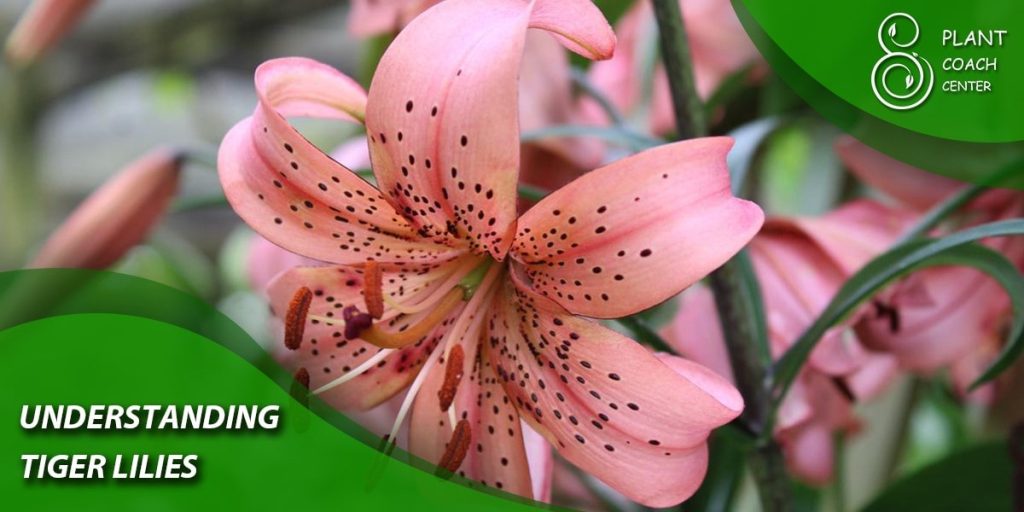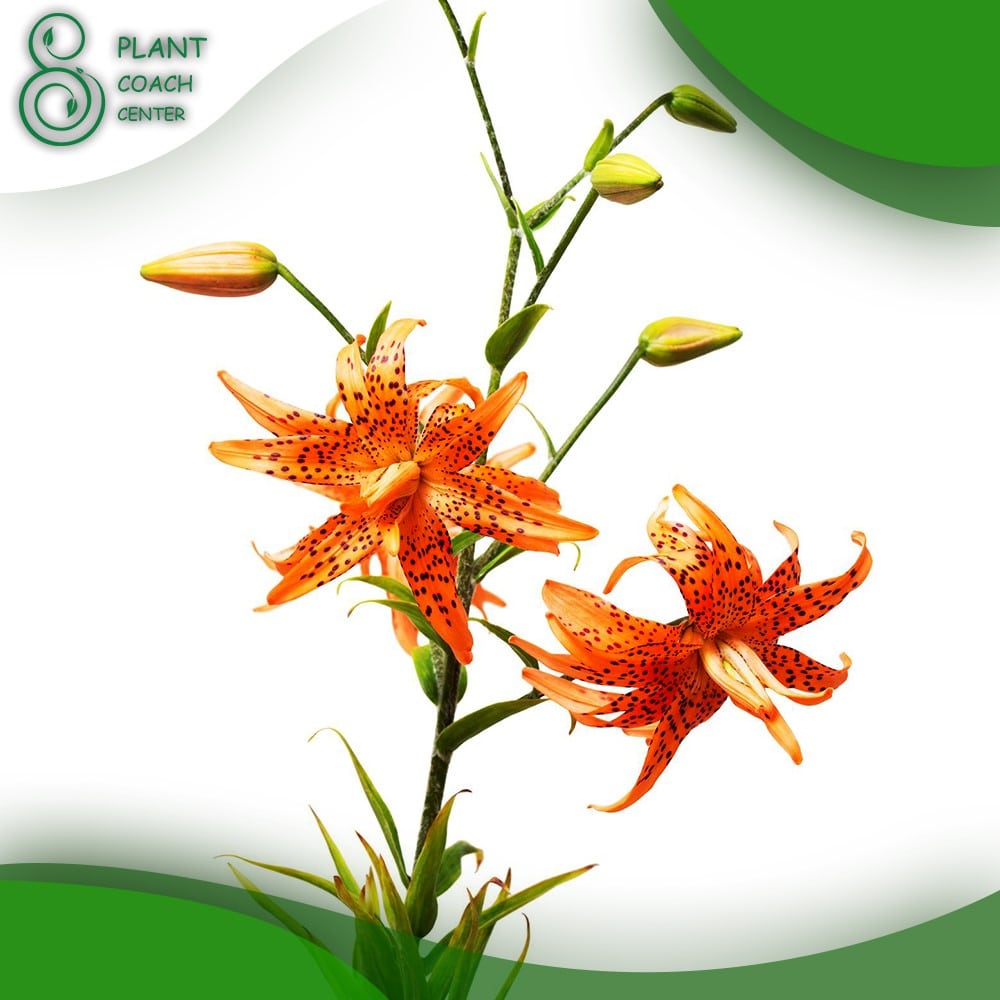When To Cut Back Tiger Lilies
Tiger lilies are renowned for their striking beauty and vibrant blooms, adding a touch of elegance to any garden or landscape. To ensure their continued health and stunning displays, proper pruning is essential. Knowing when and how to cut back tiger lilies can significantly affect their growth, vigor, and overall appearance.

Understanding Tiger Lilies
Overview of Tiger Lilies
With their characteristic orange-spotted petals and tall stems, tiger lilies belong to the Lilium genus, a group of perennial flowering plants cherished for their showy blossoms. Native to Asia, these lilies have become popular worldwide due to their captivating aesthetics and ease of cultivation.
Growth Cycle of Tiger Lilies
Before diving into pruning, it’s crucial to comprehend the growth cycle of tiger lilies. Typically, these plants follow a seasonal pattern. During spring, the first tender green shoots emerge from the ground, indicating the start of their growth phase. As summer approaches, the lilies bloom in full glory, showcasing their mesmerizing flowers to the world. In fall, the flowers fade, and the plant prepares for dormancy.
Significance of Pruning for Plant Health
Pruning plays a vital role in maintaining the health and vitality of tiger lilies. The plant can direct its energy toward new growth and bud development by removing spent flowers and damaged foliage. Moreover, proper pruning prevents disease and pest infestations, ensuring the lilies stay robust and visually appealing.
Factors Influencing Pruning Timing
Pruning timing for tiger lilies is a critical consideration as it directly impacts the health and performance of the plants. Several factors come into play when determining the optimal time to prune, ensuring the lilies receive the care they need throughout their growth cycle. Let’s explore these factors in more detail:
Seasonal Considerations
The changing seasons significantly impact the growth and development of tiger lilies. Understanding the growth stages during different seasons will help you make informed decisions regarding pruning:
- Spring: In the spring, tiger lilies begin their growth cycle with the emergence of tender green shoots from the ground. During this phase, avoiding heavy pruning is essential, as the new shoots are crucial for the plant’s early development. Light pruning can remove winter-damaged foliage or spent flowers from the previous year.
- Summer: As summer arrives, tiger lilies reach their peak bloom. Deadheading, the practice of removing faded flowers, can be performed throughout the blooming period. Deadheading encourages the plant to produce more flowers and prevents energy wastage in seed production. Some light pruning may also be required to remove damaged or diseased foliage.
- Fall: Towards the end of summer, the tiger lilies begin preparing for dormancy as the flowers start to fade. During this time, avoid any significant pruning that might shock the plant. Allow the lilies to undergo natural senescence, where they absorb nutrients from the dying foliage to store for the next season. Once the foliage turns yellow and dies back, you can trim the stems to ground level after the first frost.
Climate and Geographic Location
Your garden or growing area’s climate and geographic location are crucial in determining when to prune tiger lilies. Different regions experience varying temperature ranges, frost dates, and growing seasons, affecting the ideal pruning time.
- Cold Regions: In colder regions with harsh winters, you might consider pruning your tiger lilies in early fall before the first frost. Removing the above-ground foliage can help protect the plant’s roots and minimize frost damage during the winter.
- Milder Climates: You may opt for late fall pruning in areas with milder climates. This allows the lilies to continue enjoying their blooms for a bit longer, making the most of the extended growing season.

Specific Plant Health Indicators
Observing the condition of your tiger lilies can give valuable insights into when pruning is necessary. Keep an eye on the following indicators:
- Foliage Condition: Yellowing, wilting, or spotting on leaves can be signs of stress, disease, or pest infestation. If you notice these issues, addressing them promptly through targeted pruning is essential.
- Flowering Patterns: Monitoring the flowering patterns can also guide you on when to deadhead. Once the flowers fade and lose their vibrant colors, it’s time to remove them to encourage more blooms.
By considering these factors, you can tailor your pruning efforts to the specific needs of your tiger lilies, ensuring they remain healthy, vigorous, and visually stunning throughout the growing season.
Pruning Techniques for Tiger Lilies
Tools Required for Pruning
Before starting the pruning process, gather the necessary tools. A pair of sharp and clean pruning shears is essential to make precise cuts without causing unnecessary damage to the plant.
Step-by-Step Guide to Pruning
- Preparing for Pruning: Begin by cleaning your pruning shears with a disinfectant to prevent the spread of diseases. Then, ensure the shears are sharp to make clean cuts.
- Identifying Pruning Targets: Examine the plant and identify the specific parts that need pruning. This includes spent flowers, damaged stems, and diseased or pest-infested foliage.
- Cutting Techniques: remove spent flowers by snipping them just above the nearest healthy bud for deadheading. For damaged stems and foliage, make clean cuts close to the base of the plant, ensuring no ragged edges remain.
Best Practices for Clean Cuts and Avoiding Damage
When pruning tiger lilies, precision is key. Clean cuts reduce the risk of open wounds, which can attract pests and diseases. Avoid tearing or ripping the plant’s tissue, hindering proper healing. Additionally, avoid excessive pruning, as it can weaken the plant and reduce its ability to produce flowers in the following season.
Benefits of Pruning Tiger Lilies
Pruning is a crucial horticultural practice that offers several benefits for the health and appearance of tiger lilies. When done correctly and appropriately, pruning can significantly impact these beautiful plants’ growth, flower production, and overall well-being. Let’s delve deeper into the benefits of pruning tiger lilies:
Encouraging Growth and Vigor
Regular pruning promotes healthy growth and vigor in tiger lilies. The plant can redirect its resources and energy toward new growth and development by removing spent flowers and damaged or diseased foliage. This ensures that the lilies can allocate nutrients effectively, leading to stronger stems, more robust roots, and an overall healthier plant.
Enhancing Flower Production
One of the primary reasons gardeners prune tiger lilies is to enhance flower production. Deadheading, the practice of removing faded flowers, prevents the plant from putting energy into seed production. Instead, it encourages the production of more flower buds, leading to a prolonged blooming period with an abundance of vibrant and eye-catching blooms. This continuous blooming cycle can be particularly rewarding for gardeners, who enjoy the lilies’ beauty for an extended period.
Preventing Disease and Pests
Pruning can act as a preventive measure against diseases and pest infestations. Removing diseased or infested parts of the plant promptly prevents the spread of pathogens and pests to other areas of the plant. Additionally, proper pruning techniques can enhance air circulation within the plant, reducing humidity and moisture on foliage, which can further discourage the development of certain diseases.

Maintaining Aesthetic Appeal
Pruning is essential for maintaining the aesthetic appeal of tiger lilies. Removing spent flowers and damaged foliage keeps the plant neat and tidy. This practice contributes to a visually pleasing garden and prevents the lilies from looking unsightly or unkempt.
Regulating Size and Shape
Tiger lilies have the potential to grow vigorously and form large clumps over time. Pruning helps regulate their size and shape, preventing overcrowding and providing sufficient space for each plant to thrive. Controlling the size also ensures that the lilies do not overshadow other nearby plants or encroach on walkways and paths.
Revitalizing Overgrown Plants
In some cases, tiger lilies may become overgrown and lose vigor, resulting in reduced flower production. You can rejuvenate overgrown lilies and encourage new growth through selective and careful pruning. Thinning out crowded areas and removing old, non-productive stems can revitalize the plant and improve its health and appearance.
Training and Shaping
Pruning offers an opportunity to train and shape the growth of tiger lilies. Removing specific stems or branches can encourage the plant to develop a more desirable form, creating a harmonious and balanced visual appeal within the garden.
Pruning is a vital aspect of tiger lily care that yields numerous benefits. Pruning plays a central role in ensuring that your tiger lilies thrive and become a highlight of your garden landscape by encouraging healthy growth, promoting continuous flowering, preventing diseases and pests, and maintaining the plant’s aesthetic appeal.
Potential Risks and Mistakes
Over-Pruning vs. Under-Pruning
Both over-pruning and under-pruning can have negative consequences for your tiger lilies. Over-pruning, involving excessive removal of healthy foliage or flowers, weakens the plant and may hinder future growth. On the other hand, under-pruning may lead to a buildup of diseased or spent material, which can compromise the plant’s health and appearance.
Common Pruning Errors to Avoid
Use clean and sharp pruning tools to minimize damage during cuts to avoid potential risks. Do not rush through the pruning process; carefully identify and address each specific issue. Regularly inspect your tiger lilies for signs of pests and diseases, and address any problems promptly to prevent further damage.

Pruning Tiger Lilies at Different Life Stages
Pruning Young Tiger Lilies
Young tiger lilies require gentler pruning to support their early development. Focus on removing dead flowers to encourage further bud formation and remove any damaged or weak stems. Limit hard pruning during the initial stages, allowing the plant to establish a robust root system and develop a strong structure.
Pruning Mature Tiger Lilies
Mature tiger lilies can benefit from more extensive pruning. The plants are better equipped to handle more substantial cuts by this stage. Deadheading, thinning, and removing damaged or diseased parts become essential for maintaining the plant’s health and promoting continuous flower production.
Revitalizing Overgrown Tiger Lilies
If your tiger lilies have become overgrown or crowded, consider dividing and transplanting them. Over time, these plants can form large clumps, leading to decreased flowering and increased vulnerability to diseases. Transplanting divisions to new locations can rejuvenate the lilies and create additional beautiful blooms.
Dealing with Common Tiger Lily Problems
Identifying Plant Diseases
- Botrytis Blight: Recognizable by grayish-brown spots on leaves and flowers. Prune affected parts and dispose of them properly to prevent spreading.
- Gray Mold: Appears as fuzzy gray growth on flowers and foliage. Prune infected areas and improve air circulation to minimize the risk of infection.
- Leaf Spots: Identified by dark spots on leaves. Remove affected foliage and avoid overhead watering to reduce moisture on leaves.
Managing Pest Infestations
- Aphids: Small, sap-sucking insects that cluster on new growth. Prune-infested shoots and use natural predators or insecticidal soap to control aphid populations.
- Lily Beetles: Bright red beetles that feed on leaves and flowers. Handpick and dispose of them, or use organic insecticides to manage infestations.
- Slugs and Snails: Leave irregular holes in leaves and flowers. Handpick these pests during the evening or use physical barriers to protect your lilies.
Special Considerations for Container-Grown Tiger Lilies
Pruning in Pots vs. the Ground
When pruning tiger lilies in containers, the process is similar to pruning those in the ground. However, container-grown lilies may require more frequent pruning due to their restricted root space. Regularly monitor the plant for signs of overcrowding, and consider repotting or dividing as needed to maintain healthy growth.
Potting Mix and Drainage Importance
Using a well-draining potting mix is crucial for container-grown tiger lilies. Adequate drainage prevents waterlogged soil, which can lead to root rot and other plant health issues. Ensure that your pots have drainage holes, and choose a potting mix specifically formulated for container gardening.
Winter Care for Tiger Lilies
Preparing Tiger Lilies for Winter
As fall progresses and winter approaches, preparing your tiger lilies for the colder months is important. Cut back the stems to about 2-3 inches above the ground after the first frost. This helps protect the plant and directs its energy toward root development during the dormant period.
Protection and Insulation Techniques
To protect your tiger lilies from harsh winter conditions, consider applying a layer of mulch around the base of the plant. This provides insulation, preventing extreme temperature fluctuations and reducing the risk of frost damage. Remove the mulch in early spring to allow new shoots to emerge.

Alternative Methods of Cutting Back Tiger Lilies
Deadheading vs. Hard Pruning
Deadheading, the removal of spent flowers, is an effective way to encourage continuous blooming and prevent seed production. On the other hand, hard pruning involves more extensive removal of foliage and stems. Consider your specific goals and the condition of your tiger lilies to determine whether deadheading or hard pruning is more appropriate.
Division and Transplantation
Dividing and transplanting tiger lilies can be an alternative method of rejuvenation and propagation. This process involves:
- Carefully dig up the clumps.
- Separating them into smaller sections.
- Replanting them in new locations or containers.
The division promotes healthier growth and allows you to expand your tiger lily collection.
Conclusion
Knowing when to cut back tiger lilies is crucial for their health, growth, and blooming potential. By understanding the growth cycle, considering seasonal factors, and monitoring plant health indicators, you can make informed decisions about pruning timing. Employing proper pruning techniques and avoiding common mistakes will help ensure the longevity and beauty of your tiger lilies. With careful attention and timely pruning, you can enjoy the splendid displays of these magnificent flowers year after year.
When is the best time to prune tiger lilies?
Prune after the first frost in late fall.
How does pruning benefit tiger lilies?
Pruning enhances flower production and plant health.
Can I prune tiger lilies during blooming?
Yes, remove faded flowers to encourage more blooms.







